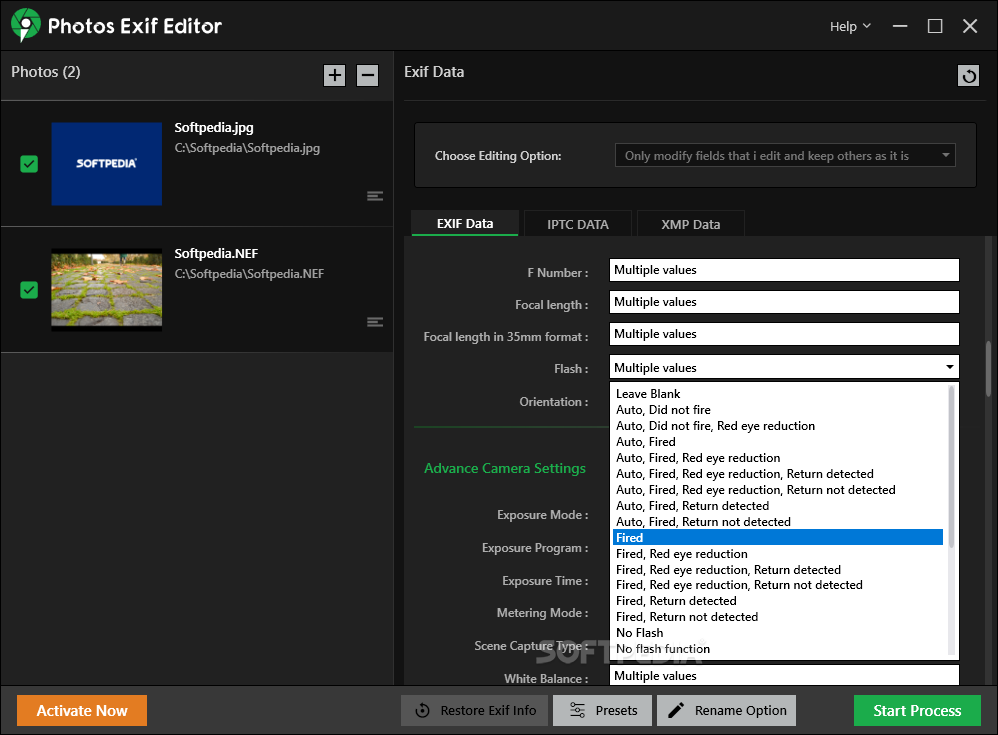

- ONLIME IMAGE EXIF VIEWER MAC OS X
- ONLIME IMAGE EXIF VIEWER PDF
- ONLIME IMAGE EXIF VIEWER FULL
- ONLIME IMAGE EXIF VIEWER SOFTWARE
- ONLIME IMAGE EXIF VIEWER TRIAL
Other good tools are Opanda IExif, IrfanView's Metadata plugin, and KUSO Exif Viewer, all of which are freeware as well. It's simple, free to download, and shows more information than other EXIF tools. My favourite dedicated tool is ExifTool with the GUI plugin.

There are many great programs that you can use, ranging from simple, dedicated EXIF viewers right up to high-end graphics editing software.
ONLIME IMAGE EXIF VIEWER FULL
If you want to access the full list of EXIF tags you'll need to use some more advanced software. You won't see the full list of properties but you will get the most important ones, and this is often all you'll need. This is the quickest and easiest way to read your photo's metadata. Depending on which file manager you're using you may need to switch to a different information tab.

Linux - Right-click the file and choose "Properties".
ONLIME IMAGE EXIF VIEWER MAC OS X
Mac OS X - Right-click on the picture, click "Get Info", and expand the "More Info" section. Windows - Right-click on an image, select "Properties", and switch to the "Details" tab. You can view EXIF info directly from your operating system's file manager: There are a number of ways to access your photos' EXIF data, depending on how much information you need to view:

Most of the values listed are self-explanatory, easy to read, and familiar to most photographers - EXIF isn't quite so daunting after all! As you can see, it contains detailed information about the camera, the settings used for this shot, and the final image itself. The following screenshot shows some sample EXIF data from a photo I took recently. Luckily camera manufacturers have thought of this and come up with their own equivalents which do support RAW, and when you later save the file as a JPEG that data will be converted to EXIF and stored with it. Usually this isn't a problem, since most people will tend to shoot in JPEG, but it does mean that if you set your camera to RAW mode you won't be able to capture EXIF data. Over time this technical knowledge will help you recognise and correct similar problems before they occur, and become more familiar with your camera's settings.ĮXIF is somewhat limited in that it is only supported by two image formats - JPEG and TIFF. For example, you might notice that a shot of a runner has turned out a bit blurry, so you can examine the metadata to check your shutter speed, aperture, ISO speed and so on, and decide how you could do things differently in future. This can be immensely useful when you're reviewing your pictures. This information is known as "metadata" and can include things like the date and time the shot was taken, camera settings like shutter speed and focal length, and copyright information. However, I was pleasantly surprised to discover that it's actually very simple, and can help you improve your photography in a very real way.ĮXIF stands for "exchangeable image file format", which doesn't really give you any clues as to what it actually is, but in a nutshell it allows you to store certain information within your photos. I was the same way for a long time - it sounded like it was probably complicated and of little practical use.
ONLIME IMAGE EXIF VIEWER TRIAL
Want to learn more about how a DAM could benefit your team? Sign up for a free Brandfolder trial or schedule a demo with one of our DAM experts here.If you've been into digital photography for any length of time you may have heard of EXIF data, although you might not know what it is or why you'd want to use it. Once published or distributed, DAMs can analyze how, where and by whom assets are being used.ĭigital asset management platforms are used by marketing, sales and creative teams at some of the world's largest brands. When used for distribution, DAMs encourage asset permissioning and expiration, ensuring only the correct content is available to the correct recipient for a specified amount of time. In addition to meticulous organization within the DAM’s central file system, these files are discoverable using unique identifiers such as their metadata and tags (auto and manual).
ONLIME IMAGE EXIF VIEWER PDF
DAMs are intended to encourage the organization of a company’s digital architecture, eliminating the use of buried files and folders typically housed in Google Drive or Dropbox.ĭAM systems scale to store massive quantities of digital assets, including but not limited to: photos, audio files, graphics, logos, colors, animations, 3D video, PDF files, fonts, etc.
ONLIME IMAGE EXIF VIEWER SOFTWARE
A DAM is a software platform brands use to store, edit, distribute and track their brand assets. Digital Asset Management (DAM) has, in recent years, become a critical system for companies of all industries and sizes.


 0 kommentar(er)
0 kommentar(er)
